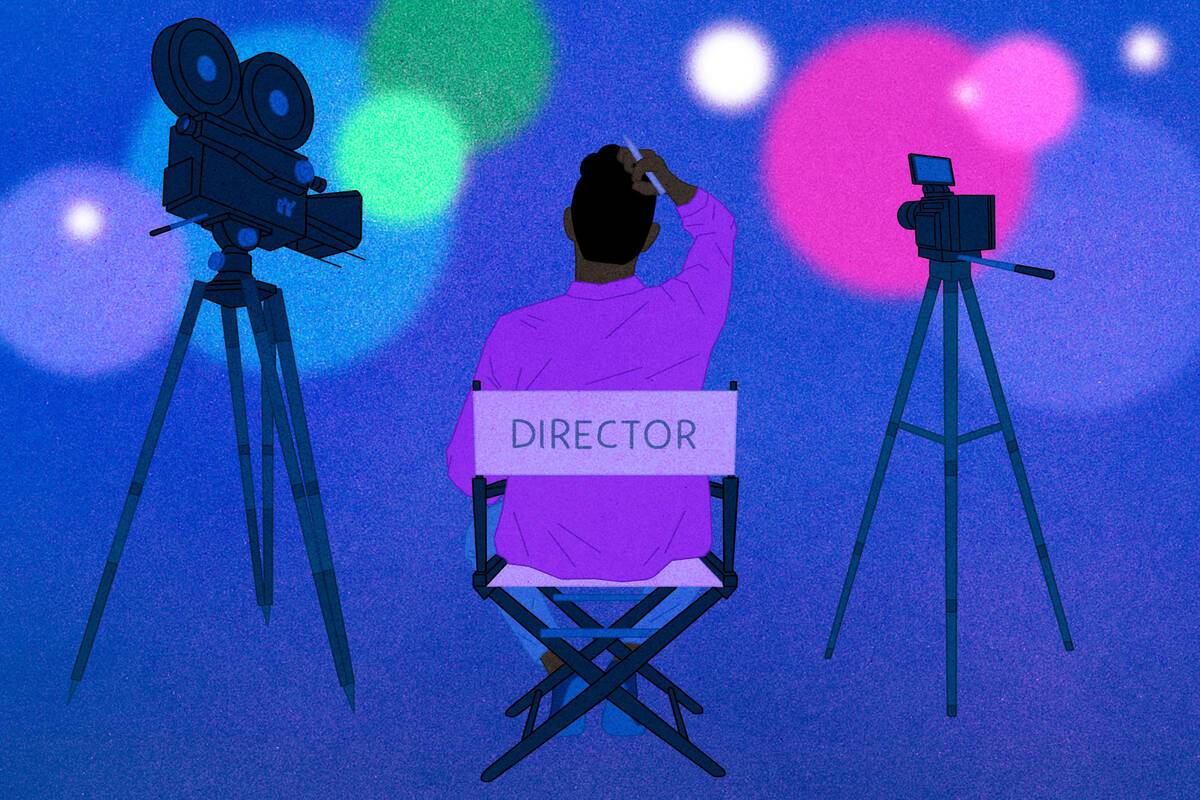Finance & Accounting May 1, 2024
Who Takes a Risk on New Technology?
In Hollywood, new directors were more likely than veterans to embrace digital cameras—a finding that showcases how individuals’ career concerns shape tech adoption.

Lisa Röper
The movie “Sky Captain and the World of Tomorrow” was released in 2004. “Me and You and Everyone We Know” came out the following year. There is little that these movies share. The former is a steampunk sci-fi adventure that takes place in a technologically advanced version of 1939; the latter is a rom-com. But they do hold two facts in common: they were directorial debuts, and they were shot with digital cameras.
Digital cameras were relatively novel technologies at the time—the overwhelming majority of directors still used film—but they were starting to appear on the scene. For Filippo Mezzanotti, an associate professor of finance at Kellogg who studies technology adoption, this moment presented an uncommon research opportunity, in part because the decision about which camera to use is generally made by a single person: the director.
“We often have data on how companies act when it comes to technology adoption. We know that company X does this and company Y does something different,” he says. “But we don’t know who is making the decision within the institution, and it seems like this individual component might be quite important.”
In a new paper coauthored with Grant Goehring from Boston University and S. Abraham Ravid from Yeshiva University, Mezzanotti turns to Hollywood directors to examine how individuals influence technology adoption. They find that early career directors, especially those making their first film, are more likely to adopt digital cameras in their infancy, when the payoff is uncertain. The researchers theorize that these decisions are driven by career concerns.
“In a career as competitive as directing, those who are new to the game have a tendency toward risk,” Mezzanotti says. “They’re trying everything they can to make an exceptional movie.”
More broadly, the results suggest that companies could benefit from paying close attention not only to the internal processes that guide technology adoption, but also to the specific individuals who are making these decisions. Career concerns, which tend to change over time as people gather clout and experience, can significantly shape the decision-making process.
The two sides to risk
At the outset, it wasn’t obvious that newer directors would be drawn to digital cameras more so than experienced ones.
On the one hand, experienced directors would be accustomed to the process of shooting film and so, arguably, inclined to stick with what they know. New directors, who have less attachment to this legacy, might be more likely to experiment. But on the other hand, experienced directors possess a degree of job security that affords them room to experiment. One flop wouldn’t likely end their career. New directors don’t have the same soft landing afforded by reputation and may want to play it safe by sticking with a tried-and-true technology.
“In a career as competitive as directing, those who are new to the game have a tendency toward risk.”
—
Filippo Mezzanotti
Moreover, prior research on how career concerns affect behavior, which typically focuses on the finance sector, has found that younger managers overwhelmingly hew to conventional strategies—“herding” behavior, as it’s called. But filmmaking, Mezzanotti notes, is a very different industry than finance, which means these earlier findings may not apply.
In the end, these competing possibilities made it difficult to make even a basic prediction about which group would be more likely to adopt the new technology. “We had no idea what to expect,” Mezzanotti says.
Mapping the rise of digital
To learn how early and later-career directors would approach the advent of digital cameras, the researchers undertook a labor-intensive data-collection process. Using the Internet Movie Database (IMDb), they compiled a list of all the movies that made more than $10,000 at the U.S. box office between 1975 and 2018. They collected two key variables for every movie.
First, they collected information about the director and his or her career. IMDb provides the director of any given film along with other films the individual has directed and other roles he or she has had in the movie and TV industry.
Second, they noted technical specifications on the cameras used to film the movie. They manually verified whether each camera was digital or film. Cases where both digital and film cameras were used were classified as digital.
They then mapped director experience to camera specs looking specifically at the period between 1997and 2009. During these years, digital-camera technology advanced to the point where video quality from a digital camera was comparable to film. Importantly, though, digital was not economically more attractive than film, as movie theaters still relied on film projectors, which meant that digital movies had to be converted to film for distribution. This changed in 2007, when film studios helped cinema chains finance the purchase of digital projectors. By 2011, about half of movies used digital projection, up from less than 10 percent in 2000.
“After 2007, we see a real boom and in digital projection, making it far more economically attractive than film,” Mezzanotti says. “At that point, the production companies start pushing it.”
Early career directors favor risk
The researchers find that, between 1997 and 2009, directors who are making their first movie have a roughly 10 percent chance of using digital technology. This is twice the probability of directors with one or two prior movies, and three times the probability of directors with even more experience.
“The main result is very simple,” Mezzanotti says. “Adoption is not driven by experienced people but by those who are early in their career.”
Behind this result, the researchers believe, are career-related concerns among early directors—namely, how might they maximize their odds of making it in a very competitive field.
The researchers run a range of secondary analyses to support this claim while ruling out (though not definitively) several competing explanations. For instance, it could be that first-time directors simply have less power to decide whether they shoot digital or film; this would mean that the production company was the one pushing to use the new technology. When looking at the data, however, Mezzanotti and his colleagues find that the results hold even among a subset of first-time directors who are already established Hollywood personalities—think Ben Affleck—and as such would be in a strong position to negotiate.
A director’s age and technical background, they found, could also not explain the decision to go digital.
Accounting for individuals in technology adoption
These findings are at odds with earlier research demonstrating a herding effect among early career professionals. But most of this scholarship is rooted in the finance sector, which is competitive, no doubt, but not nearly as competitive as directing movies. The researchers suspect it is the extremely competitive nature of filmmaking that fosters a very specific set of career concerns.
“The movie industry is not the manufacturing sector or the service sector,” Mezzanotti says. “It’s a special case.”
For Mezzanotti, though, the findings still speak to a broader story. In any ultracompetitive profession, where the risk of failure is especially high, people who are just embarking on their career will likely be most open to risky new technologies.
The findings also hold implications for how companies, whether in competitive industries or not, ought to think about the adoption and diffusion of technology throughout their organization.
“A lot more work is needed to think through the individual incentives that can drive technology adoption and development in a given company,” Mezzanotti says. If all of the people responsible for making decisions are high up and far along in their careers, then they may have certain perceptions that inhibit taking necessary risks. “At the very least, having a mix of different people at different points in their career is a way to balance out these incentives and build a toward a richer consideration of new technologies.”
Dylan Walsh is a freelance writer based in Chicago.
Goehring, Grant, Filippo Mezzanotti, and S. Abraham Ravid. 2024. "Technology Adoption and Career Concerns: Evidence from the Adoption of Digital Technology in Motion Pictures." Available at SSRN: https://ssrn.com/abstract=4507607 or http://dx.doi.org/10.2139/ssrn.4507607.



